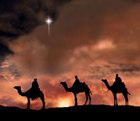Bible Astronomy
Why did the Magi – Wise Men – follow The Star of Bethlehem for hundreds of miles to chart its course?
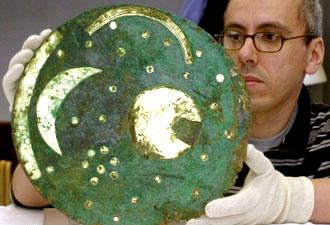
The Nebra Sky Disc
In other words, how much did the people of the Bible know about astronomy?
The answer is that they were not really aware of astronomy as we know it. The Israelites’ view of the universe is what you see. There were no theories about
- what might cause the movement of the stars, or
- what there might be that could not be seen.
The Bible gave a picture of an orderly cosmos, huge and awe-inspiring, but completely under the control of the laws fixed by God. Within it, the stars were innumerable, but God had counted and named them all (lsaiah 40:26).
We can safely assume that Jewish scholars had absorbed some of the knowledge of Egyptian and Babylonian astronomy. But this does not seem to have affected the biblical view of the stars and planets.
There are references in the Bible to the stars, but they were never seen as having any mythological life of their own – as they were in other countries. What knowledge the Israelites had comes from data on agriculture, meteorology and calendrical matters.
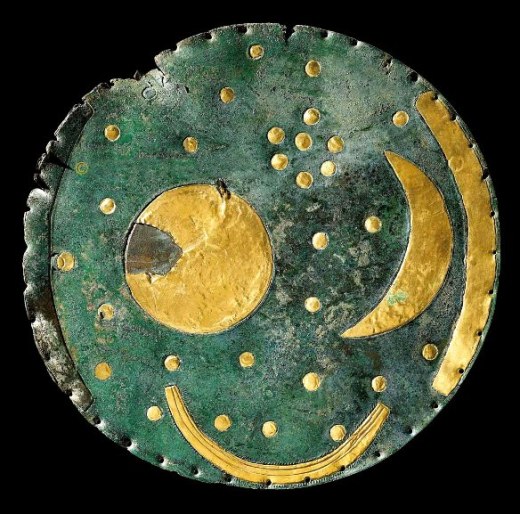
The Nebra disk, constructed about 3,600 years ago. It shows a sun or full moon, a lunar crescent, and stars, including a cluster interpreted as the Pleiades
What stars are mentioned in the Bible?
The Bible calls all luminous heavenly bodies, with the exceptions of the sun and the moon, stars.
But they are only noted because they show the greatness of God who had created them and alone could count them or direct their courses (Genesis 1:16; Psalms 8:3; 136:9; l47:4; Amos 5:8; Job 9:7; Jeremiah 31 :35).
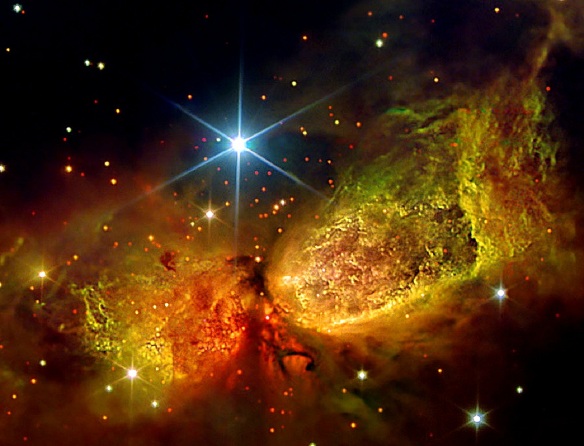
The stars mentioned in the Bible are
- The Bear in Job 9:9 and the “Bear and its children“ in Job 38:32. Apparently these refer to the seven prominent stars of Ursa Major
- Mazarot in Job 38:32: lt is not certain what this term meant. lt might mean all the constellations of the heavens as in 2 Kings 23:5, or the twelve Zodiacal signs
- The Pleiades called Kema and Ksil in Hebrew, Amos 5:8; Job 9:9: a group of seven stars in the constellation Taurus, not far from Orion. The group is not very bright but it can be seen in Palestine just before dawn on a spring morning. For this reason. the power of awakening growth in spring has been ascribed to it – see the story of Bathsheba.
- Orion, the “Hunter” in Job 9:9; 38:3, Amos 5:8. This is the biggest constellation in the southern skies, containing such brilliant stars as Betelgeuse and Rigel. See Paul waxing lyrical about the stars in 1 Corinthians 15:41.
- “Chambers of the South” (Job 9:9): The exact reference is not known. although the phrase may refer to the stars that appear above the horizon to travellers going southward along the caravan route to Arabia. One of the stars of the Southern Cross is visible at Eilat, the southernmost point in Israel. The Babylonians had no notion of a South Pole, and Job may be referring to this idea.
- Kaiwan in Amos 5:26 possibly refers to Saturn or to the planet Mercury.
- Day Star, son of Dawn in Isaiah 14:12 is mentioned as Venus in the Septuagint and Vulgate, as this planet appears at dawn. Some scholars believe, however, that the name refers to the moon crescent which appears in the morning towards the end of the lunar month.
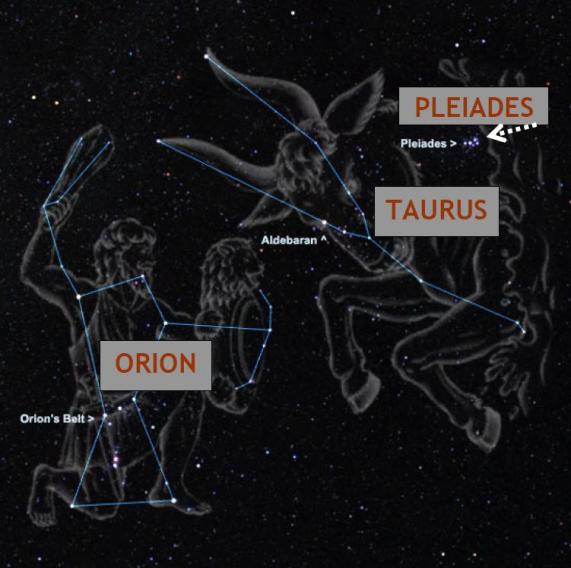
Did Bible people know about astronomy?
- As early as the fourth century BC, the Chaldeans made exact astronomical observations and knew the course of the stars, especially the planets. They could calculate the time of the appearance of the new moon and predict solar and lunar eclipses.
- Babylonian astronomy was interested mainly in meteorology, and their concept of the universe was basically mythological.
- The Greeks took over the Babylonian notion that the stars were gods, and Greek mythological names for the stars are used to this day.
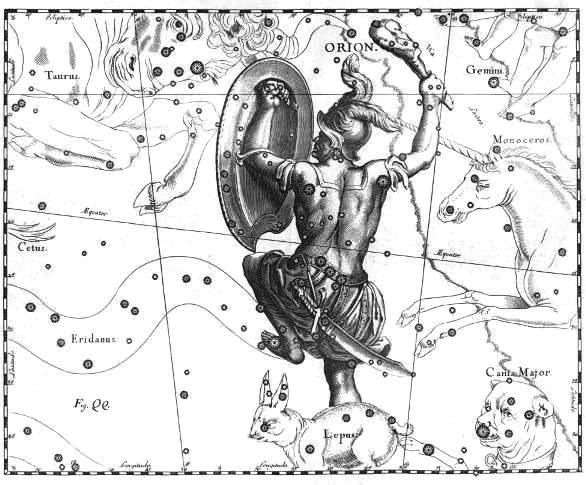
Above: some of the constellations, as the Greeks saw them
Biblical concept of the Universe
The Israelite picture of the universe drew heavily on the discoveries of the Babylonians and other neighbouring nations. But the Babylonians saw the world as wider and older than did the writers of the Bible.
The Bible sees a universe with the earth at its centre. This universe was divided into three:
- the vault of the heavens, containing the sun, the moon and the stars
- the earth beneath
- the waters under the earth (Exodus 20:4) and those above the heavens which are the source of rain.
In the Bible, there seems to be no great distance between heaven and earth. Without much effort, birds fly into the vault of heaven.
The heavens are seen as superimposed vaults (Deuteronomy 10:14; 1 Kings 8:27; Psalms 148:4) in the highest of which God holds court.
The sun and the moon follow their courses through the heavens independently, while the stars are directed by the divine will (Psalms 147:4; Isaiah 40:26; Judges 5:20).
What did the universe look like for them?
- The vault of the sky covered the earth, supported by a circular range of mountains (Job 26:10-11)
- The earth itself either rested directly on the surrounding waters, or was supported on columns rising up from the depths to support heavens and earth alike (l Samuel 2:8; Psalms 75:3; Job 9:6).
Against this, there is the statement in Job 26:7 to the effect that the earth “hangs upon nothing”. The diagram below explains this idea. You have to remember that the biblical picture was based on observation, but it also had a poetic and mythical idea.
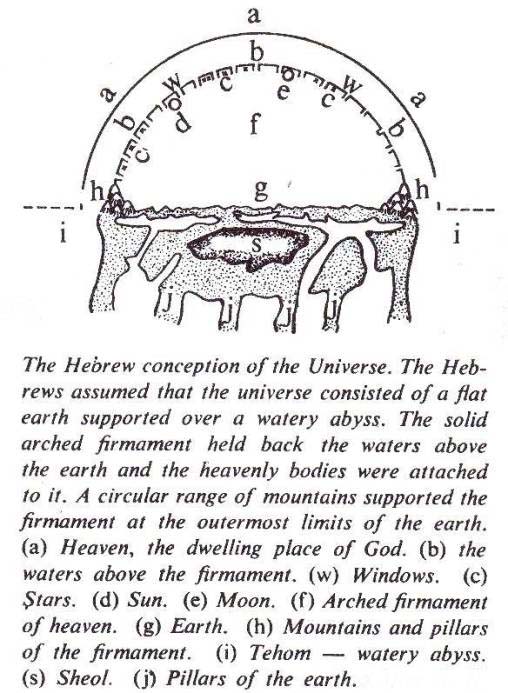
Worship of the stars
Israel’s neighbours worshipped the stars, but Israel did not. The Deuteronomist warned the Israelites against this, and Isaiah II said: ‘Lift up your eyes on high and see: who created these? He who brings out their host by number, calling them all by name.’ (40:26)
Stars played little or no part in Israelite life.
Were the stars Angels?
It is possible that stars identified with gods in pagan myths were transmuted into angels (see Isaiah 40:26 or Job 38:7 where ‘the morning stars rejoiced’ at the creation).
In later books of the Bible, the course of the stars and their effect on human destiny became the subjects of speculation. Chapters 72-82 of Enoch are an imaginary reckoning of the movements of the sun and the moon, which tells us much about the author of Enoch, but little about current knowledge of astronomy.
What about the Apocalypse?
Of much greater significance in Enoch and other apocalyptic writings including the New Testament, is the conviction that the entire world would ultimately be consumed by fire.
Ezra speaks of a period of silence following the catastrophe, after which a new earth would be created.
The visions are echoed in the New Testament apocalypse (Book of Revelation), where John of Patmos refers to the final battle of Armageddon (19:19-21), the Last Judgment (20:11-15), and the vision of a new universe (21:1-8).
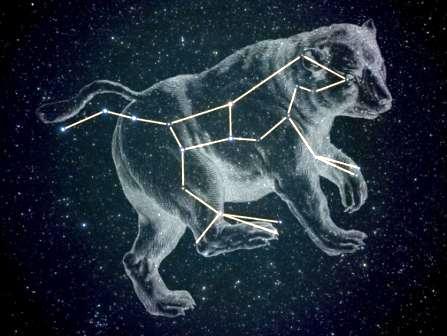
The stars of Ursa Major (the Great Bear)
Search Box
![]()
© Copyright 2006
Elizabeth Fletcher

